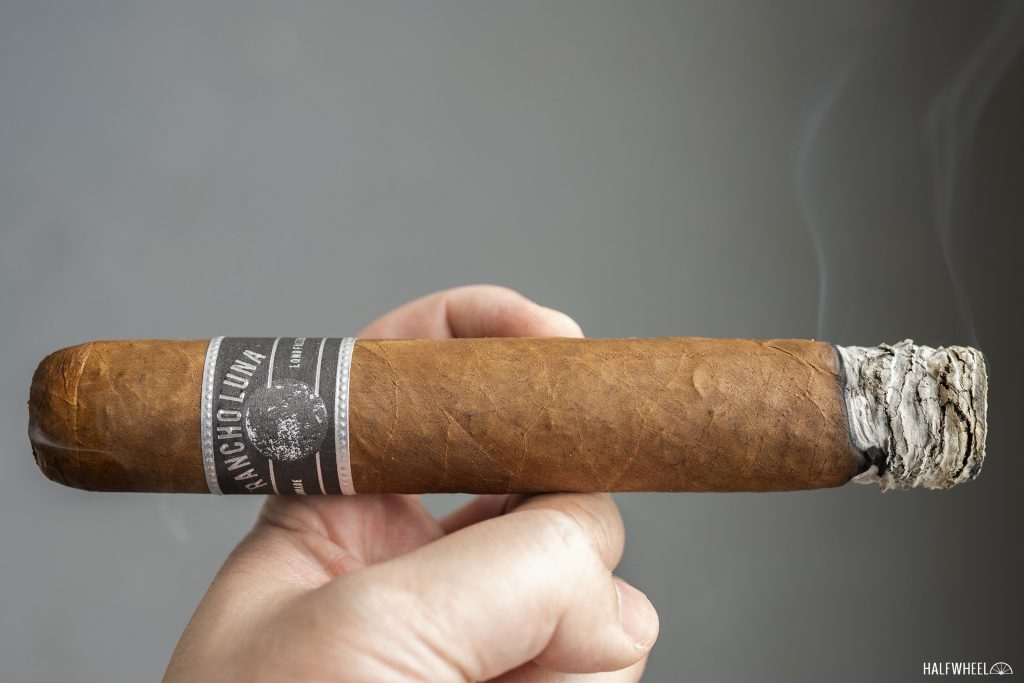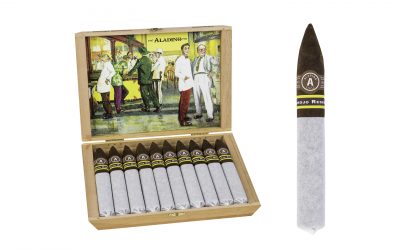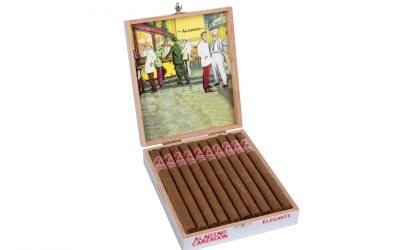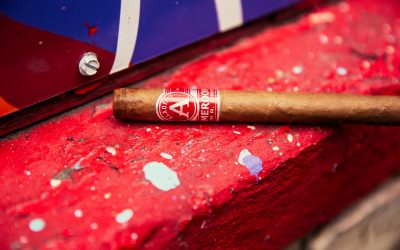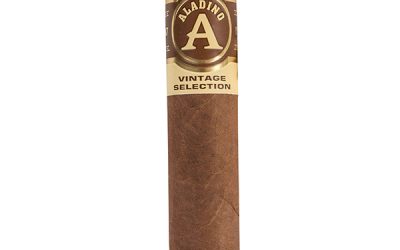RANCHO LUNA GRANDES 7 X 64
Last year, Justo Eiora of JRE Tobacco Co. told me that the company was planning on releasing a new version of its Rancho Luna line but in bigger sizes.
Given that the regular Rancho Luna line is offered in a 6 1/2 x 60 vitola, it seemed fair to question just how much bigger things could get. As it turns out, a half-inch longer and quite a bit thicker.
In January, the company formally announced the Rancho Luna Grandes, a new Honduran puro that uses a habano wrapper and corojo fillers.
- Rancho Luna Grandes 7 x 64 — $7.20 (Box of 20, $144)
- Rancho Luna Grandes 7 x 70 — $7.80 (Box of 20, $156)
The cigars debuted at TPE 2020 in January and began shipping in February, though as with all things 2020, it seemed like it took a little bit longer for it to show up at a number of stores due to the coronavirus COVID-19 pandemic.
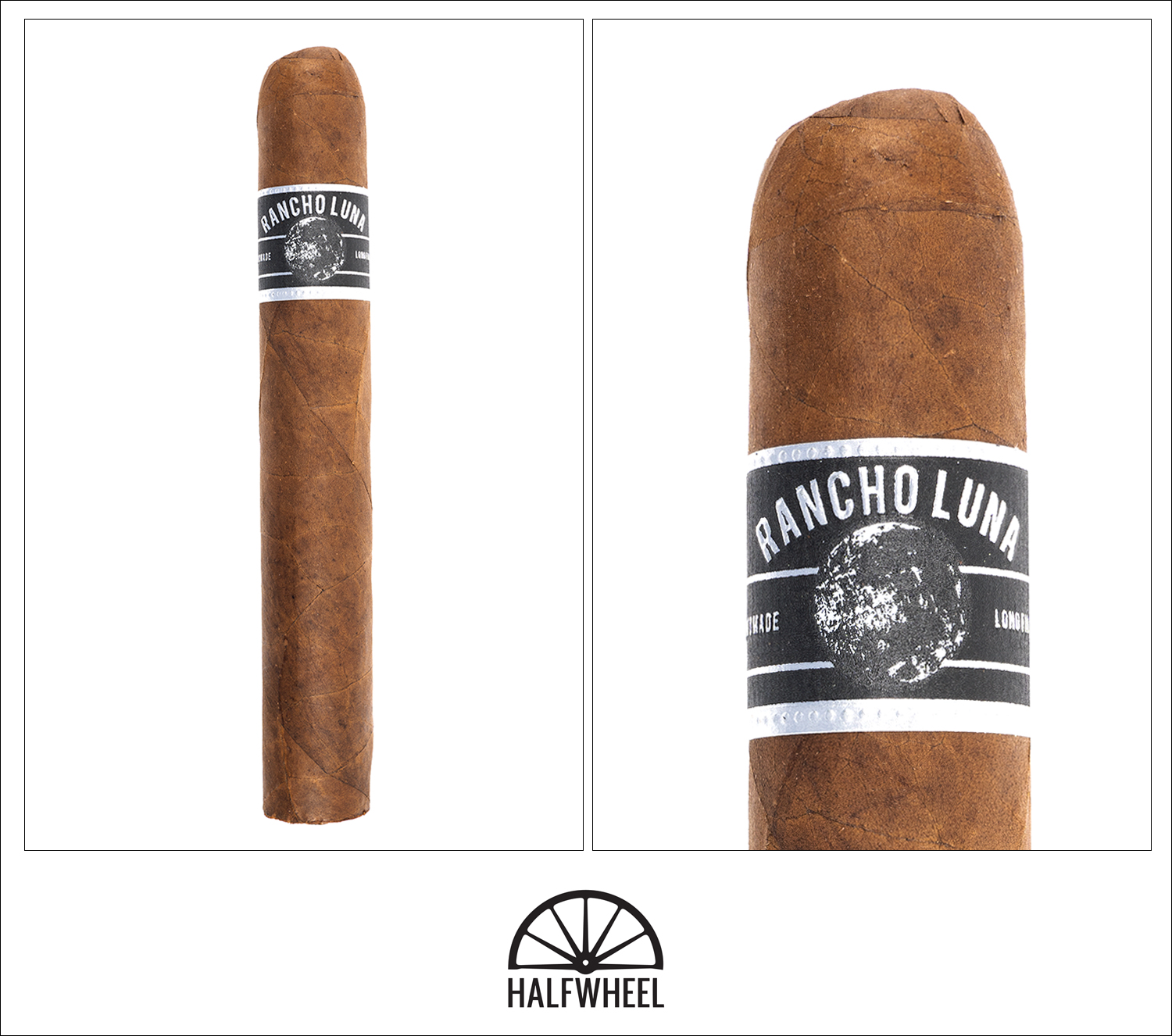
- Cigar Reviewed: Rancho Luna Grandes 7 x 64
- Country of Origin: Honduras
- Factory: Fabrica de Puros Aladino at Las Lomas Jamastran
- Wrapper: Honduras (Habano)
- Binder: Honduras
- Filler: Honduras (Corojo)
- Length: 7 Inches
- Ring Gauge: 64
- Vitola: Super Gordo
- MSRP: $7.20 (Box of 20, $144)
- Release Date: February 2020
- Number of Cigars Released: Regular Production
- Number of Cigars Smoked For Review: 3
It is challenging to believe that this is the smaller of the two vitolas for the Rancho Luna Grandes. I’d also be lying if there wasn’t a series of expletives running through my head, as well as genuine questions about why so many people seem to enjoy smoking cigars of this size. I think it’s also worth pointing out that outside of one of the world’s most expensive cigars, I can’t think of another similarly-sized cigar that isn’t some sort of value-oriented product. As such, it’s not surprising that the wrapper doesn’t show any obvious issues but is far from the best-looking leaf I’ve ever seen from JRE. Aroma from the wrapper is medium-plus with leather, some barnyard and a fair bit of ammonia. The foot is full and hits my nose with quite a bit of pound cake. Behind that, there’s something that reminds me of morning dew, oranges, some creaminess and ammonia. That distinct pound cake flavor shows up on the cold draw with a much more pronounced vanilla flavor. There’s a bit of black pepper and some sort of artificial sweetness on the back end of the cold draw, which ends up around medium-full.
I typically use a single-flame torch for reviews, but not this time. I grab the Colibri Quasar Table Lighter and immediately the room smells like a typical cigar lounge. That same flavor I found on the aroma—a mixture of woods, tobacco and toastiness—makes it into my first puff, though the standout is a toasty earthiness joined by some creaminess. In the first inch, there’s a very distinct flavor that reminds me of seasoned sushi rice, but sadly it only sticks around for about 10 minutes. Eventually, the profile settles on earthiness, salty leather and a mild amount of cinnamon on the top of the mouth. Retrohales are dry with earthiness on top of some raspberry sweetness and ammonia before a finish of pepper and a not-so-great creaminess. Without retrohaling, the finish is more appetizing, starting with earth before citrus, toastiness and some of that cigar shop-like smell. Throughout the entirety of the first third, there’s an interesting dynamic when it comes to how the smoke makes my mouth salivate, which changes with both the amount of smoke I take in and when I let it go. Flavor is medium-full, body is medium and strength is medium-plus.
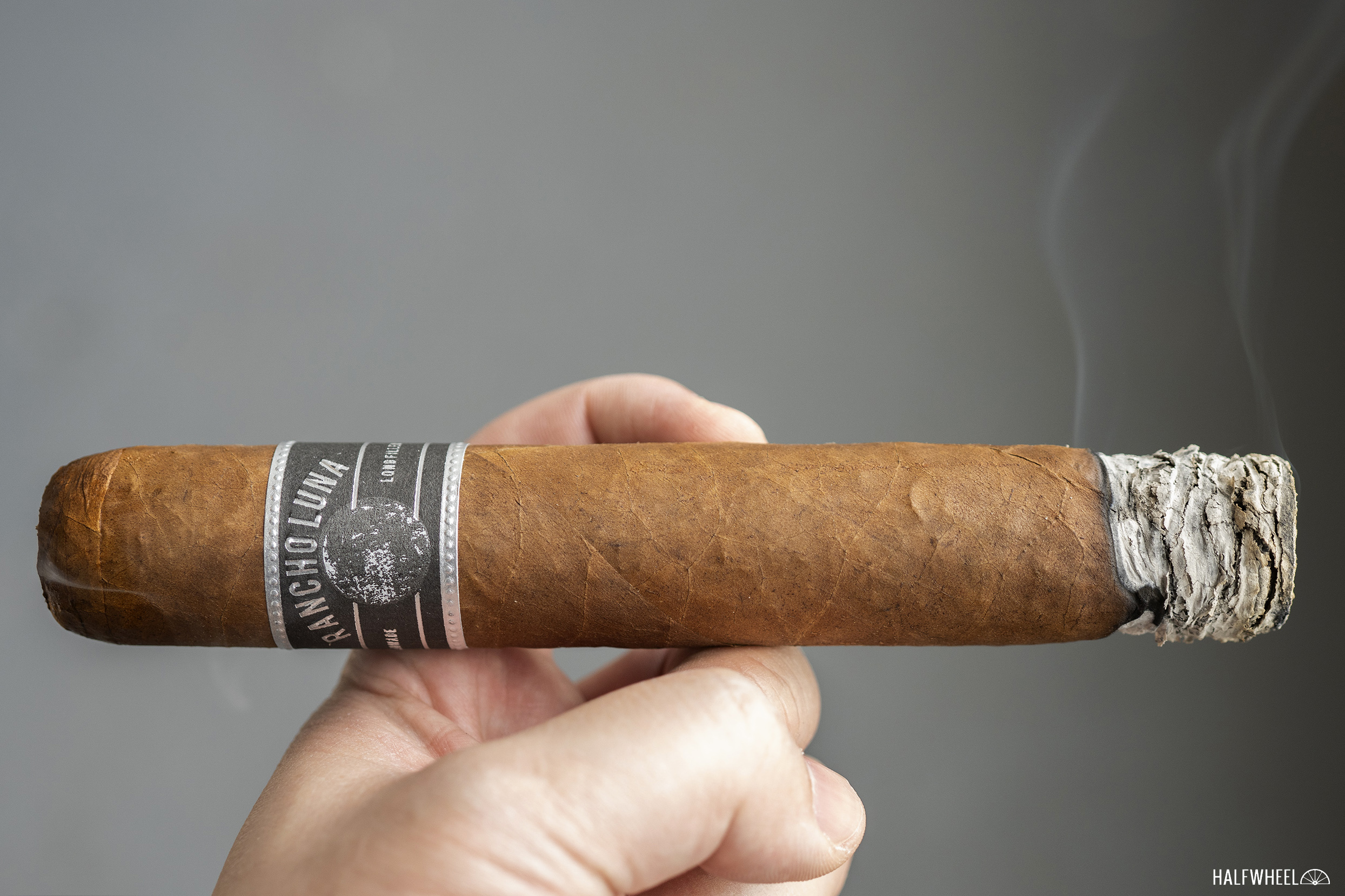
The Rancho Luna Grandes gets much earthier in the second third. Just as I think it can’t provide any more earthiness, around the halfway mark, it’s an even stronger profile. Underneath that is oatmeal, creaminess and saltiness, the latter of which is only on the tongue. Retrohaling adds even more earthiness along with minerals and burnt coffee. The finish is a deep, salty earth mixture before some generic pepper takes over and lasts until I take another puff. Flavor is full, body is medium and strength is medium-plus. As with most cigars of this size, the draw is easy and the smoke production is massive. Each cigar needs a touch-up in the middle portion due to an uneven burn.

There’s not any massive change in the final third and I’m also not sure there’s much in the way of new flavors. Instead, the profile just seems to lose individual flavor sensations as the Rancho Luna Grandes gets closer to its end. In some ways, that’s addition by subtraction, but most of the addition seems to be earthiness. The saltiness holds on through the two-inch mark but disappears with an inch left. I can still find oatmeal and white pepper, but even retrohales with an inch left aren’t able to deliver much beyond earthiness. The finish has some acorns and damp earth, two flavors I didn’t pick up earlier, but it’s very much in line with what’s otherwise been an earth bomb. Flavor finishes medium-full, body is medium-plus and strength is medium-plus. Construction is fine until the end though there’s a declining smoke production, particularly with an inch left.
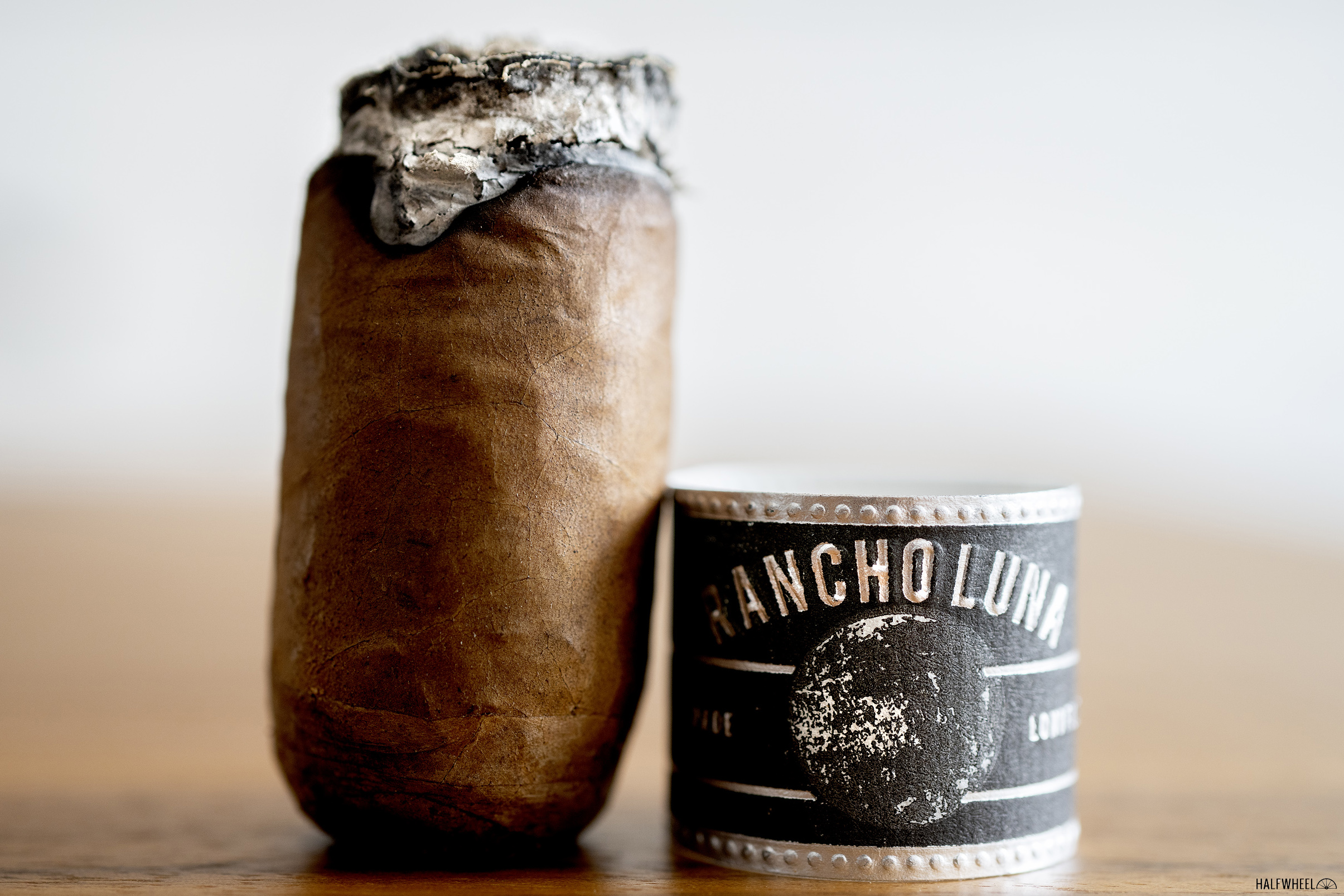
Final Notes
- While this isn’t my favorite size, I understand why it appeals to some. First, the value proposition is undeniable. Second, cigars of this size tend to avoid most construction pitfalls: the draw is easy, smoke production is massive and you can generally puff at whatever frequency you’d like.
- That being said, these cigars aren’t going to contain a factory’s best tobacco and most cigarmakers will tell people they don’t smoke cigars of this size, which—and I want to stress I do not know if this is the case for this cigar—would lead me to believe that cigars of the sizes are oftentimes developed with less passion and time than other cigars.
- Cigars of this size seem to have a very specific type across the manufacturers who make them: around $10, medium in strength and easy-burning construction.
- The one exception to all of this is Cuban custom-rolled cigars, where finding gigantic cigars of all shapes and sizes is becoming more and more commonplace. Yes, there are still plenty of normal sizes and a lot of thinner sizes, but I’d argue the Cuban custom roll marketplace has a disproportionate amount of gigantic cigars compared to what you would find in a typical American cigar shop.
- For a long time, over the course of dozens of cigars, I didn’t recall having a single construction issue with any product from JRE Tobacco Co. Finally—within the last year—I’ve had a handful of cigars that have each had a singular issue, ending JRE’s impress streak. Still, my experiences with JRE’s excellence in construction is still probably the best of any cigar manufacturer. Each of these cigars needed one touch-up to help an uneven burn.
- If you don’t know that luna is Spanish for moon, the band will make zero sense to you.
- Cigars for this review were purchased by halfwheel.
- Final smoking time was a relatively quick two and a half hours.
The Rancho Luna Grandes isn’t a cigar that I’m looking forward to smoking again anytime soon. That is exclusively due to its most noticeable trait: the size. It’s impossible to look past, but if I had to evaluate the cigar based on everything other than its massive vitola, it is otherwise fine. As with most cigars of this size, it’s very reasonably priced, the flavor is decent—though very earth heavy—and the construction is pretty good. Almost every cigar manufacturer I’ve ever spoken to has told me they, “don’t smoke 7 x 70s” and I imagine making it 64 ring gauge isn’t changing that fact. As such, it shouldn’t be surprising this isn’t the most complex or appetizing of flavor profiles, but a beverage or two will help to break up the monotonous flavor. Given the value proposition, I suspect that it won’t matter to most who are remotely interested in purchasing the cigar.
